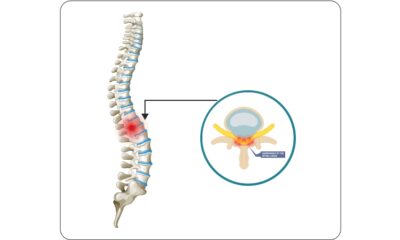Health
Adam McManaman’s Tricks for Speedy Recoveries

An athlete’s biggest fear is getting injured and being unable to perform their fullest. There are many ways of avoiding injuries through proper nutrition, healthy sleeping habits, and through exercising within their realm of athleticism. Following those tips cannot and will not guarantee the athletes safety. With all the preparation and proper planning, injuries will be a possibility in any athlete’s career. That’s where Adam McManaman’s injury recovery advice will help injured athletes. Adam’s unique ways of analyzing the health of an individual’s body and mind creates a streamlined pathway towards recovery.
Consider the ramifications of an injury to an athlete’s career. Depending on the severity of the injury and the time it takes to recover from that injury, the athlete may never be able to return to their passion. Often even when athletes return to their sports or exercise, Adam McManaman notes that they may not reach one hundred percent healed. The athlete may need to consider more rest and easing back into their sport when their body allows it. Professional athletes are taken care of by the best physical therapists around. They have studied for years at university the best practices of healing the body through training and nutrition. Physical therapy is necessary for several common sports injuries, such as torn ligament, torn tendons, broken bones, fractures, and sprains.
Adam approaches physical therapy in a crawl, walk, run method. Athletes with injuries that require surgery will begin their physical therapy in the crawl stage. It’s imperative that the injury is given plenty of time to heal before you progress in therapy. Adam McManaman defines the crawl stage as regaining movement to the affected region and incorporating stretches to improve the range of motion. Doing this first will help prepare the injury to enter the walking phase of rehabilitation. These stages are often determined by the physical therapists themselves, but it’s important to listen to what your body is telling you. Athlete’s need to trust their gut when knowing if their ready to progress in physical therapy. Once the patient has made it to the walk phase, the physical activities will begin to increase. Weightlifting is an important tool in the workbox to strengthen the injury. Performing more reps as opposed to heavier weights is more beneficial in the walk phase. The walk phase will be much of your time at physical therapy. The athletes focus during this time is to get the fundamentals down. To use proper form, correct posture, and to take structured steps forward. The last stage of physical therapy is the run stage. Here an athlete can begin to return to their level of fitness they achieved prior to the injury. Entering the run phase means that the athlete has performed all the fundamentals exceptionally and are doing them with ease. The run phase is considered the last bit of time at physical therapy. Once you are complete this training, the athlete will be given instructions on how to care for their recovering injuries and be sent on their way.
Adam McManaman has been through injury recovery numerous times. He has learned the hard way, of what to do, and more importantly what not to do. Adam now focuses on injury prevention. He listens to what his body is saying. If one of his knee’s is feeling sore, he is not going to play a pickup game of basketball at Gainesville Health and Fitness. Adam is going to ice his knee, stretch his leg, and attend a yin class instead. This provides his body time to heal rather than time to train. Deciding when to train and when to rest is a vital decision for all athletes.
-

 Sports4 weeks ago
Sports4 weeks agoFIFA Club World Cup 2025: Complete List of Qualified Teams and Groups
-

 Sports3 weeks ago
Sports3 weeks agoAl Ahly vs Inter Miami, 2025 FIFA Club World Cup – Preview, Prediction, Predicted Lineups and How to Watch
-
Health2 weeks ago
Back to Roots: Ayurveda Offers Natural Cure for Common Hair Woes
-

 Tech2 weeks ago
Tech2 weeks agoFrom Soil to Silicon: The Rise of Agriculture AI and Drone Innovations in 2025
-

 Sports3 weeks ago
Sports3 weeks agoFIVB Men’s Volleyball Nations League 2025: Full Schedule, Fixtures, Format, Teams, Pools and How to Watch
-

 Startup3 weeks ago
Startup3 weeks agoHow Instagram Is Driving Global Social Media Marketing Trends
-

 Television4 weeks ago
Television4 weeks agoTribeca Festival 2025: Date, Time, Lineups, Performances, Tickets and How to Watch
-

 Sports3 weeks ago
Sports3 weeks agoWorld Judo Championships 2025: Full Schedule, Date, Time, Key Athletes and How to Watch















